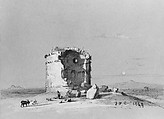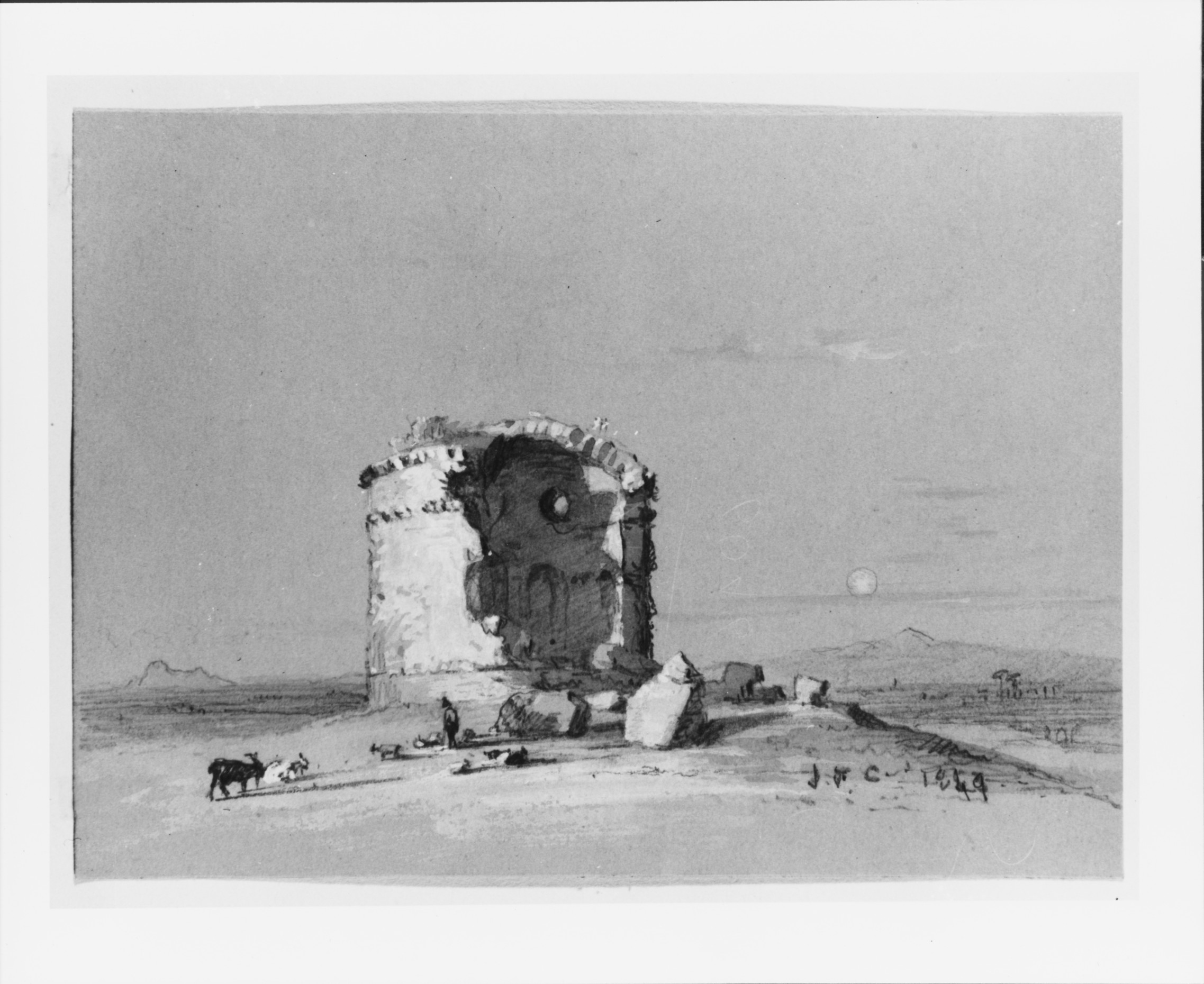Torre dei Schiavi, The Roman Campagna (from Cropsey Album)
Jasper Francis Cropsey American
Not on view
During his first European sojourn in 1847, the young Hudson River School-painter Cropsey toured and sketched in the Roman Campagna. The picturesque landscape around Rome was admired for its vast beauty and historic ruins—evidence of the greatness and decline of ancient civilizations. The Torre dei Schiavi (Tower of Slaves), a mausoleum built as part of an extensive imperial villa in the third century a.d., is one of the best-known monuments on the Campagna. As both a tomb and a ruin embodying Rome’s faded glory, the tower had poetic associations, which Cropsey emphasizes by including the rising moon, a potent symbol of eternal time. Cropsey was one of several American artists who drew the tower, including Thomas Cole (1801–1848) and William Stanley Haseltine (1835–1900).
Due to rights restrictions, this image cannot be enlarged, viewed at full screen, or downloaded.
This artwork is meant to be viewed from right to left. Scroll left to view more.



